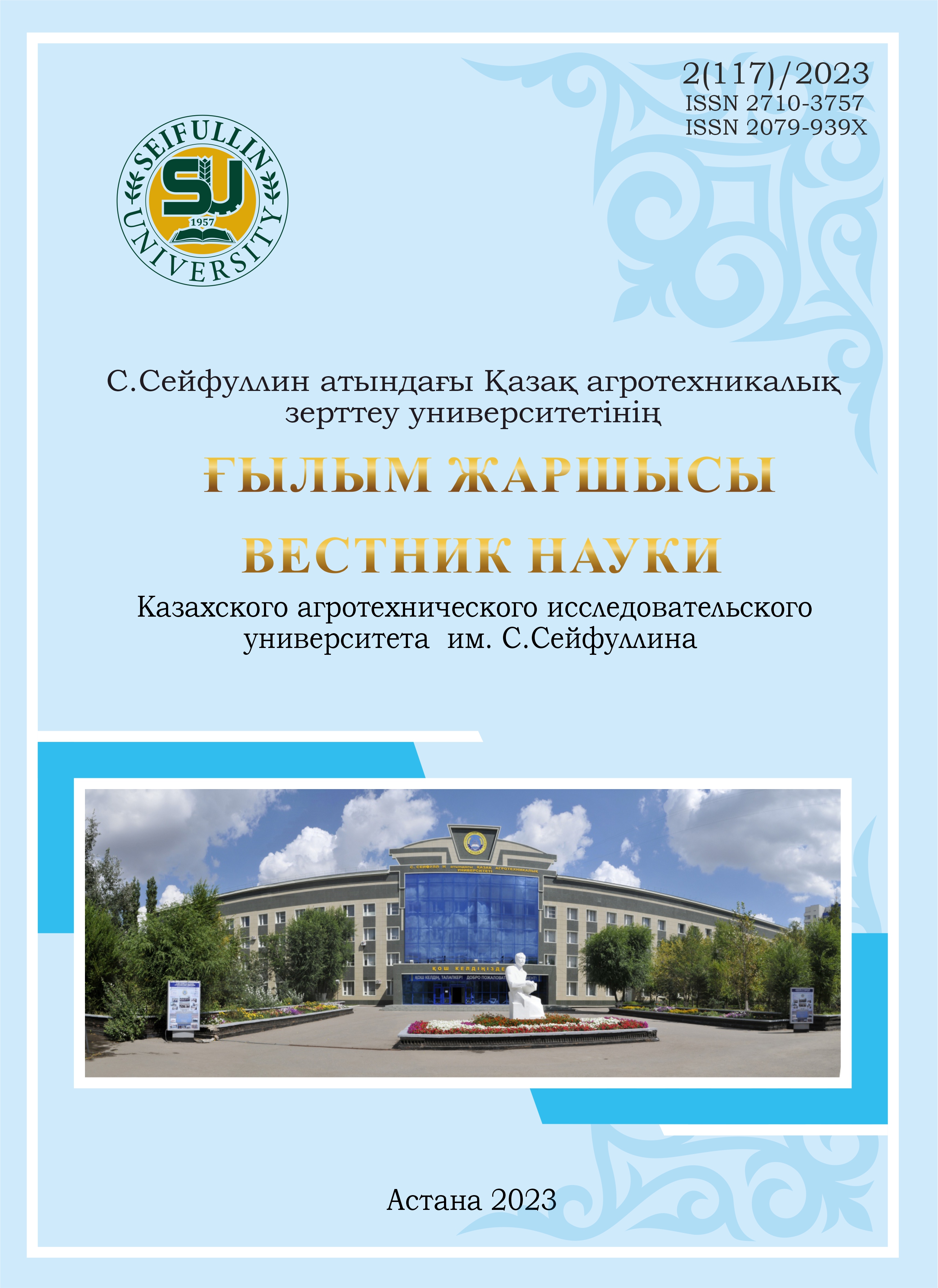DETERMINATION THE CAVITY SHAPE AND SIZES ON THE TRAIL OF THE TILLAGE KNIFE FOR LIQUID FERTILIZER APPLICATION
DOI:
https://doi.org/10.51452/kazatu.2023.2(117).1363Keywords:
sprayer; spraying; liquid fertilizer; hollow space; tillage knife; wettened band.Abstract
The paper presents the results of experimental research conducted to determine the shape and dimensions of hollow space formed on the tillage knife trace. Experiments were conducted in a soil-bin containing soil with bulk density of 1300–1400 kg/м3 and moisture of 0.7–1.1% and with the knife velocities of 0,28 m/s, 0,42 m/s, 0,67 m/s, 1,94 m/s at tillage depth of 0.13–0.15 m. According to the results the baseline length of the soil particles falling down behind the knife movement were 10–16 mm, 18–22 mm, 30–42 mm and 45–56 mm, respectively. The deviation between experimental and theoretical indicators was low (5–6%). The expected liquid-soil particles collision line depth (b), determined by graphical analysis of video records and orthogonal projection method respectively to knife velocities are ≈12 mm, ≈15 mm, ≈20 mm, ≈28 mm. This, in turn, made it possible to determine the limit of the spray angle (130°–164°), which would be sufficient to obtain the desired moistened bandwidth and minimal work speed of agricultural unit. The limits of parameters defined in the work can be used in design calculations of the proposed liquid sprayer and its analysis using computational hydrodynamics (CFD) tools.

